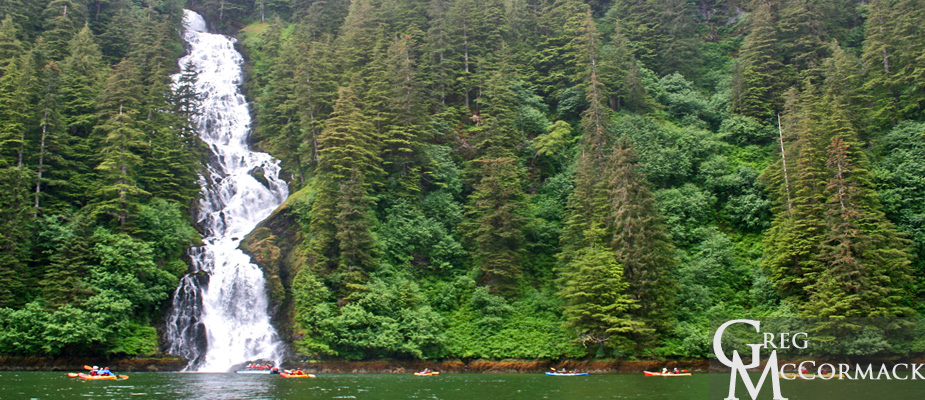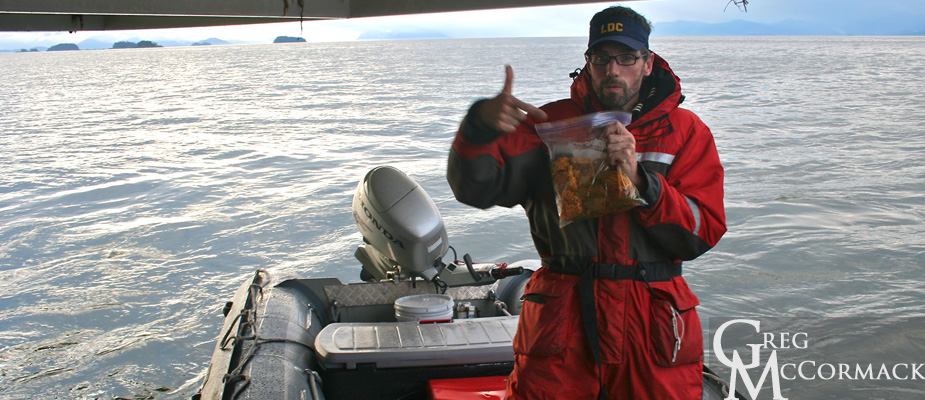Thursday | June 30th
September 10, 2011 by admin
Filed under InnerSea Discoveries
Frederick Sound
Last night we motored into this most stunning of bays on Baranof Island. The majority of guests decide to kayak up the fiord to the splendid waterfall that seems to fall out of the sky down a precipice covered in conifers. Just beyond at the head of the bay on about two hundred acres of mudflats and meadows, a grizzly bear feeds on grasses. Kayakers line themselves along the edge of the river opposite the bear. A bald eagle is perched on a stump, providing another photographic opportunity.
What is the difference between a BROWN bear and a GRIZZLY bear, you may ask? They are the same species, Ursus arctos. The coastal grizzly is called a brown bear. It is significantly larger than the interior grizzly bear because of diet and climate.
Salmon are in abundance along the coast of Alaska. Because the waters of the Gulf of Alaska warm the air enough to moderate the temperatures along the coast, brownies can stay active a couple of months longer than the interior grizzlies. The latter have to deal with temperatures that drop well below freezing, triggering the hibernation response.
We spot a brown bear on the flats and kayak upriver a few hundred meters to get a better look. An eagle perched on a beached stump above the mud-flats was a favorite photo-subject for kayakers.
Later in the day, I get on the marine radio and make a call to the Alaska Whale Foundation. I talk with world-renowned humpback whale researcher Dr. Fred Sharpe. He says that he is available to join us for a talk aboard the ship! We meet him in Frederick Sound and he motors over in his small Zodiac. Fred and I have been friends for over 20 years. He answers lots of questions and entertains guests in the lounge with his humor and knowledge.
After just a half-hour, the swells on this inland sea magically disappear and become glass-like. Humpback whales are spotted “around the clock” in all directions from the ships decks. We estimate at least two dozen whales blowing from just a hundred meters to a couple of kilometers away.
Before disembarking, Fred mentions the influx of nutrients and plankton as a result of the persistent winds we had throughout the morning. Frederick Sound is in the middle of a nutrient-rich geographical area. The plankton feed the schooling fish which in turn feed the leviathans.




Comments
One Response to “Thursday | June 30th”Trackbacks
Check out what others are saying about this post...[…] Thursday |June 30th […]